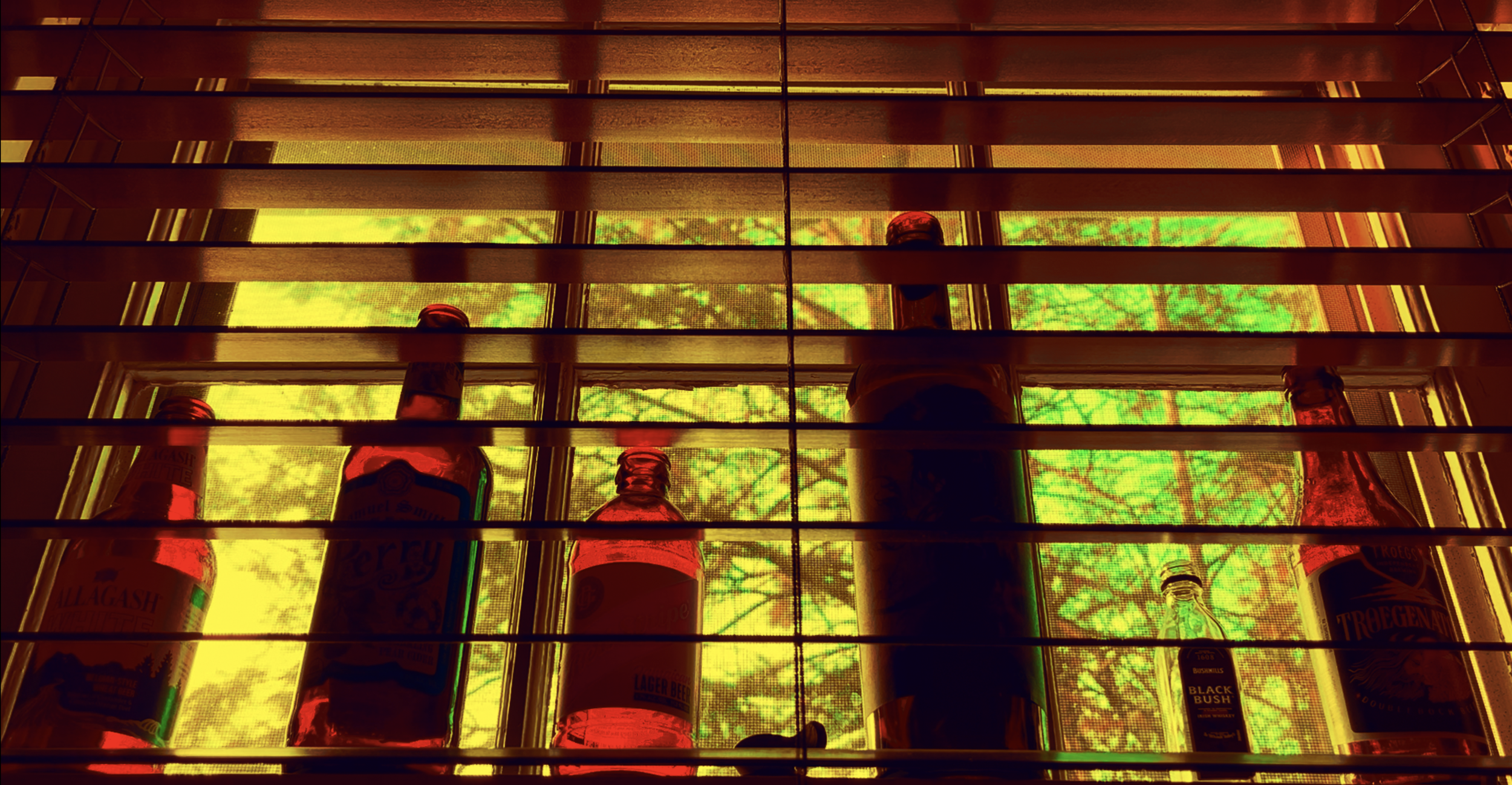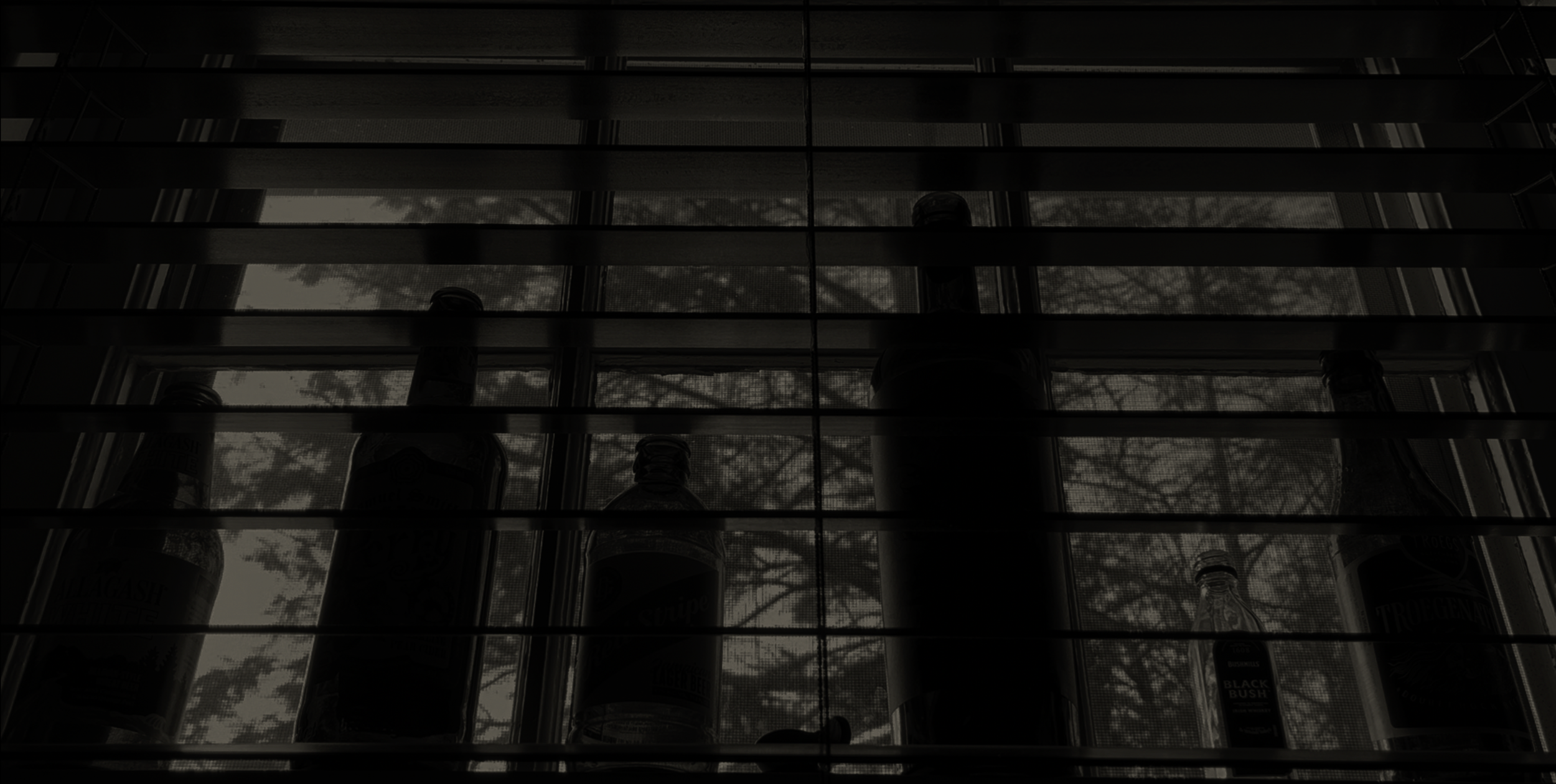My Composing Process: Bottle City (2024)
Dear Readers,
Right after finishing my most recent piece “floating square and seagulls”, I opened up another empty Logic session and began composing a new composition. Just like all of my work, it started with improvisation and experimenting. It evolved over a couple of days, and eventually involved me playing beer bottles like a flute.
I’d like to introduce you to the surreal world of “Bottle City”. Where bottle skyscrapers dominate the skyline and bottle beings walk the streets.
Let’s dive into how I made it.
Underpainting + Piano & Bass
I began with a texture. Using the “Organic Textures” library from Spitfire LABS (specifically “Thunder and Birdsong”), I created a repetitive pattern that acted as a sort of wash of sound. I think of this as the equivalent of underpainting in oil painting. Building up the foundation of the piece to build on top of it.
The next element that I added was the piano. I improvised a thematic line and I’m pretty sure that first take is what ended up being the theme for the piece:
This theme is built around a drone of G. The top melodic line frequently plays on the up-beat (think of a measure as being 1 & 2 & 3 &, and the up-beat is on the &). This causes the melody to feel slightly “off” because it isn’t always landing on the down beat. The drone of G acts as a call and response because the melody never plays at the same time as the drone. This is because I played it all with my right hand (my thumb played the drone part). It is all centered around the key and chord of C major. The last measure is in 4/4, a departure from 3/4, and adds a sort-of musical hiccup before the melody repeats again,
I then added the bass line, which was once again fully improvised: I especially like how it frequently begins on the up beat which for a bass line feels quite off kilter and unstable (in the best way possible):
Further Virtual Instrument Orchestration
From there I just kept adding more virtual instruments. I created a repetitive line for trumpets and doubled that with clarinets and piccolos. For the doubling of the main melody, I used muted violins, french horn (playing with a flutter technique) and tremolo violins. I used a Hand Bell instrument from Spitfire LABS and had that play the melody, along with an out of tuned synth from LABS library London Atmos called “On The Road”. Doubling the bass line, I added piano and electric bass. I created more percussion lines, using a kick from from the LABS Animal Kit and the Whale Percussion patch (which has a cool distorted uality to it). Finally, I added in an Aquatic Voices synth from Logic.
For the large orchestral hit near the end of the piece, I experiment with using extended techniques in the Spitfire Studio Orchestra. For example, I used a gliss performance for the violin, I also used grace note performances from the violins, a fall from french horns, trombones and tubas, a trip from the trumpets and spicatto performances from violin 1 and violin 2. The overall result was this:
My process for selecting these instruments involved just loading them up and trying them out. Seeing how they fit into the overall texture of the piece. It is very much an improvisational experience.
Playing Flutes and Bottles and Percussion
After I had the piece generally sketched out, I decided that I needed another element. A live element. Something that felt organic. So I got out my Pearl flute that my grandmother gifted me in 2008 for 7th grade orchestra. I love playing the flute, it has a wonderful human sound to it. I created four different tracks, each of me playing a different note: G (two tracks), A and C. I then ran all of those tracks through a Chorus, Stereo Spread, Stereo Delay and Pitch Shift. It sounds like this by itself:
I purposely overblew and added some harmonics because of that. This technique makes the flute more of a percussive instrument and blended wonderfully with the bottles.
Speaking of, a few years ago I began collecting beer, wine and liquor bottles of different sizes to use in my music. You can play a bottle much like you play the flute (it is all about the embouchure). So I used a pear cider bottle (larger than a beer bottle), an Allagash White bottle, the Juggernaut wine bottle (as per the name, the bottle is massive and heavy), a tiny bottle of Bushmills Black Bush whisky, and a Flying Dog beer bottle. Each bottle has a different sound and quality to it. That’s why I collecting about a dozen different ones of different sizes. I used bottles in my score for Small Mouth Sounds, among other things.
For this score I played the bottles like percussive flutes and layered the tracks on top of one another. Listening to a metronome and the piece itself, I improvised rhythms and frequently added accents to notes to add energy and momentum. While playing the Flying Dog beer bottle, I also hit the bottle with my hand in time with each note I played. This gave it even more of a percussive quality.
I added in other live percussion, using a tambourine and a small animal skin drum. For the drum, I hit the small Black Bush bottle on the bottom of the wooden surface, creating a nice high end hit. For the tambourine, I just played the drum park with the tips of my fingers (you can hear it at the end of the piece). I also hit the Allagash White bottle with my hand as a separate percussion track.
All this blended together beautifully. Here is the percussion section and bottle section playing together in an isolated track:
Filming Bottles
Once I started using bottles in the score, I realized I could also use them for the video. I set up the bottles on my brother’s windowsill, pulled down the shades and set up the camera underneath with a tripod. It looked up at the bottles. They looked like totems., statues, gods, skyscrapers. eerie beings.
I filmed for 9 minutes and took a 3ish minute segment for the video. Like a number of my recent projects, I changed the color grading in the film to line up with certain moments in the music. In this piece’s case, whenever the theme repeated. It transitions from black and white to color and back to black and white. When coming up with a name for the piece, I kept thinking about how the bottles looked like buildings. “Bottle City” came to mind. I pictured a world inhabited by bottle beings where the buildings were giant bottles. The music matched. So the video basically cycles through a day in this place from the darkened dawn to the dreamy twilight.
As the video took shape, I realized that the music should have a city element to it. The sonic environment of Bottle City. So I took some soundscapes that I recorded in Barcelona, Oslo, Rome and London and layered them over the piece. The goal was to create a wash of city sounds, but not to edit too much. I wanted it to be organic. You hear a traffic stop in Oslo, where a motorcycle idled. You hear honking horns in Rome and cars wizzing by in Barcelona. You hear the screech of breaks in Battersea Park in London. Recordings from 2019, 2020, 2022 and 2023. All mashed together to create the sound of a fictional city of bottles. Cool. right?
Bottled Conclusions
I really love this piece. I think I pushed myself musically here. I tasked myself with crafting an engaging 2+ minute piece that simply repeats the same melody. How do you make that engaging? In this case, build up the texture around the melody. Create an interesting sound world. Double the melody with different instruments. Bring bottles into the mix. And, in the end, you have a piece of music that is unique, thought provoking, and, above all, fun to listen to.
Each project that I work on makes me a better composer. That is a fact.
As always, thanks for reading.
Your’s musically,
Nicholas Escobar
The entire Logic project session
The MIDI note information for the whole score. I like this view because you can see all the layered and doubled parts very clearly, It also looks sort of like an abstract piece of art.













